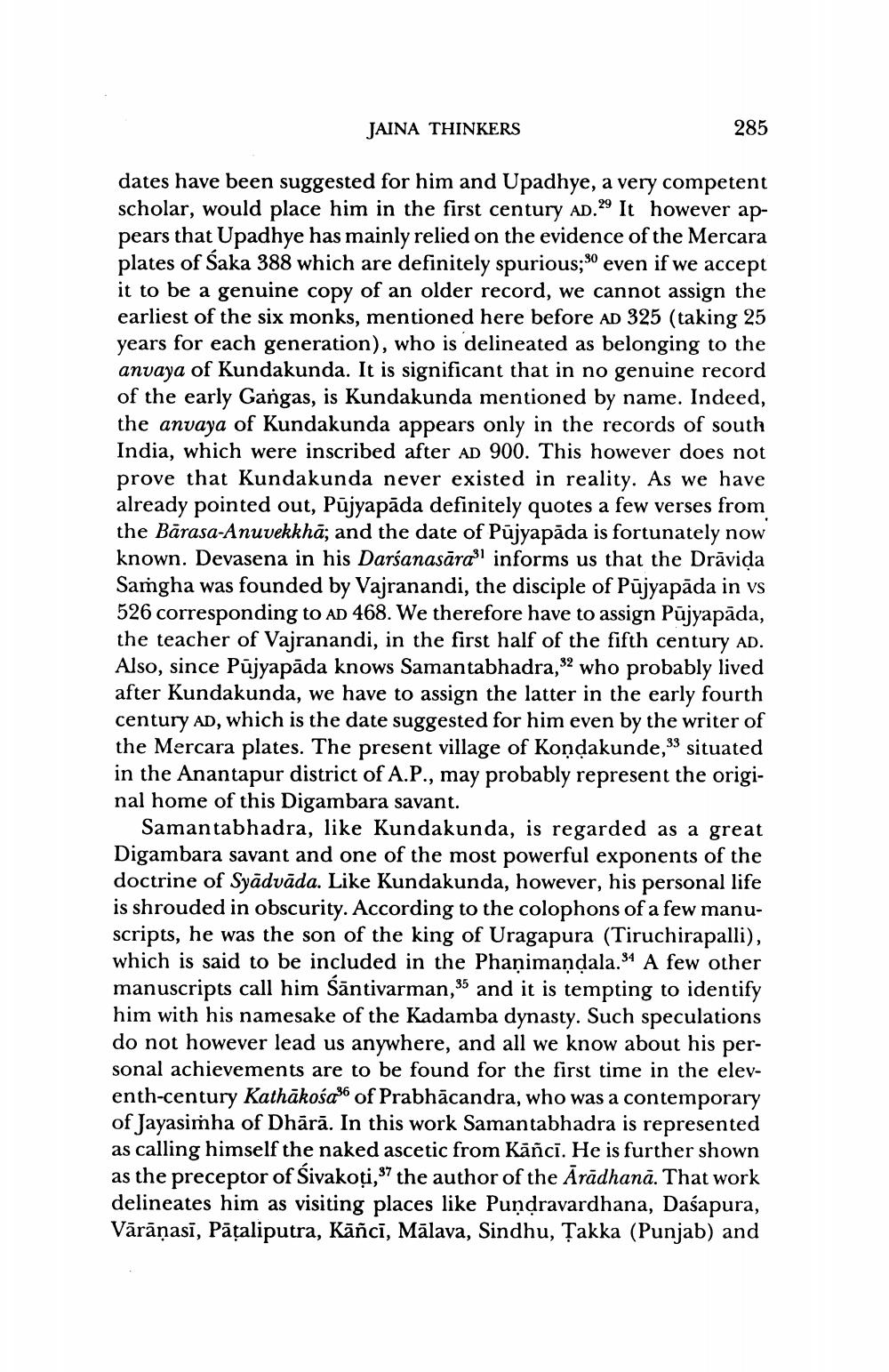________________
285
JAINA THINKERS
dates have been suggested for him and Upadhye, a very competent scholar, would place him in the first century AD.29 It however appears that Upadhye has mainly relied on the evidence of the Mercara plates of Śaka 388 which are definitely spurious;30 even if we accept it to be a genuine copy of an older record, we cannot assign the earliest of the six monks, mentioned here before AD 325 (taking 25 years for each generation), who is delineated as belonging to the anvaya of Kundakunda. It is significant that in no genuine record of the early Gangas, is Kundakunda mentioned by name. Indeed, the anvaya of Kundakunda appears only in the records of south India, which were inscribed after AD 900. This however does not prove that Kundakunda never existed in reality. As we have already pointed out, Pujyapāda definitely quotes a few verses from the Barasa-Anuvekkha; and the date of Pujyapada is fortunately now known. Devasena in his Darśanasara31 informs us that the Drāviḍa Samgha was founded by Vajranandi, the disciple of Pujyapāda in vs 526 corresponding to AD 468. We therefore have to assign Pujyapāda, the teacher of Vajranandi, in the first half of the fifth century AD. Also, since Pujyapāda knows Samantabhadra,32 who probably lived after Kundakunda, we have to assign the latter in the early fourth century AD, which is the date suggested for him even by the writer of the Mercara plates. The present village of Kondakunde, situated in the Anantapur district of A.P., may probably represent the original home of this Digambara savant.
Samantabhadra, like Kundakunda, is regarded as a great Digambara savant and one of the most powerful exponents of the doctrine of Syadvāda. Like Kundakunda, however, his personal life is shrouded in obscurity. According to the colophons of a few manuscripts, he was the son of the king of Uragapura (Tiruchirapalli), which is said to be included in the Phaṇimandala.34 A few other manuscripts call him Śāntivarman,35 and it is tempting to identify him with his namesake of the Kadamba dynasty. Such speculations do not however lead us anywhere, and all we know about his personal achievements are to be found for the first time in the eleventh-century Kathākosa of Prabhācandra, who was a contemporary of Jayasimha of Dhārā. In this work Samantabhadra is represented as calling himself the naked ascetic from Kāñci. He is further shown as the preceptor of Śivakoti, the author of the Aradhanā. That work delineates him as visiting places like Pundravardhana, Daśapura, Vārāṇasī, Pāṭaliputra, Kāñcī, Mālava, Sindhu, Ṭakka (Punjab) and




